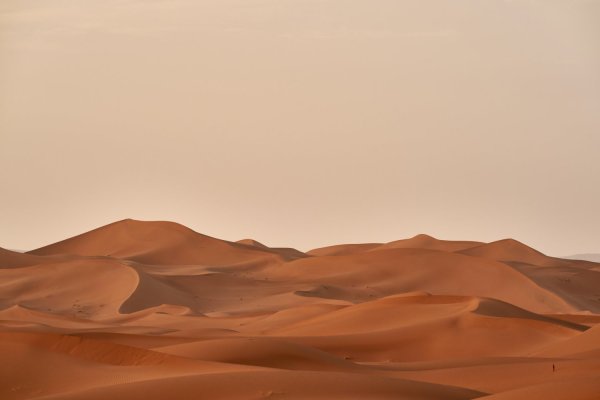
Are you tired of snapping photos of breathtaking desert landscapes, only to find out that your pictures fall flat and fail to capture the essence of the terrain? Don’t worry; you’re not alone.
But before you give up on your dream of capturing beautiful desert photos, let’s talk about how you can improve your results.
You might be thinking, “I don’t have the right gear or skills to take great pictures of the desert.” It’s easy to feel that way when you’re just starting out, but here’s the truth: You don’t need fancy equipment or years of experience to take captivating photos. You only need to know a few fundamental techniques and tips that will help you showcase that incredible desert beauty.
In this article, I’m going to share with you some handy approaches to help you elevate your desert photography game. By the time you’re finished reading, you’ll have the knowledge and confidence you need to take pro-level shots.
So are you ready to start creating gorgeous images? Let’s begin!
1. Capture the magic of golden hours
Capturing stunning desert landscapes can be an unforgettable experience for any photographer. However, it requires more than just pointing and shooting. To truly capture the beauty of the desert, it’s important to pay attention to the light and timing of your shots.
As a beginner, you might be tempted to shoot during the middle of the day when the sun is high. But this can result in dull and uninspiring images. To make the most of your desert photography, it’s best to shoot during the golden hours, which occur during the early morning and late afternoon. The light during these hours is softer and can add a sense of magic and wonder to your images. The low angle of the sun during this time can also bring out the natural textures and lines in the sand, creating a warm, golden glow that looks amazing in desert shots.

Note: While shooting during the golden hours is a great way to capture stunning desert images, it’s important to be mindful of your shadow. Make sure it doesn’t intrude into your image and detract from the overall composition.
Additionally, if you plan to shoot at or after sunrise or sunset, a good landscape photography tripod and a slow shutter speed can help you capture plenty of detail and ensure sharp, well-exposed results.
2. Add points of interest to break the repetition
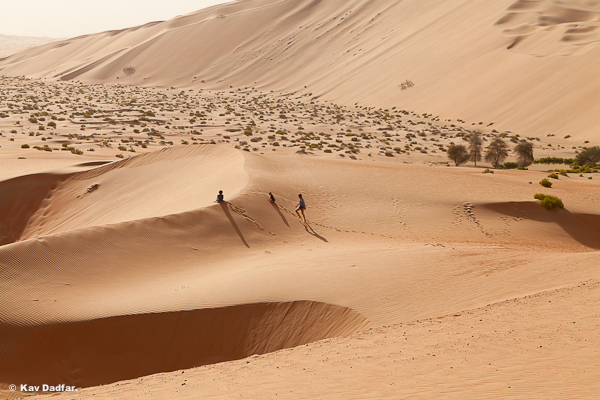
When it comes to desert photography, capturing engaging images can be a bit tricky. After all, endless stretches of sand can quickly become monotonous, leaving viewers uninterested. The key to making your images stand out? Add points of interest to break up the repetition.
Points of interest can be anything from a shrub or a sand dune to a palm tree or even people. Adding such elements will help guide the viewer’s eyes toward the main subject and create a sense of depth in the composition.
However, placing these points of interest can’t just be done at random; it requires some consideration. Here, the rule of thirds can be useful for creating balanced and visually pleasing shots. I’d also recommend taking a minimalistic approach, which can help you achieve spectacular results.
But make sure you don’t overdo it! Including too many points of interest can detract from the desert landscape, so it’s best to stick to one or two main subjects. They’ll create a focal point for the viewer that helps show off the beauty of the surrounding desert.
By incorporating points of interest thoughtfully, you can create images that are not only visually stunning but also engaging and captivating. So next time you’re out in the desert, don’t be afraid to get creative and experiment with adding some points of interest to your shots!
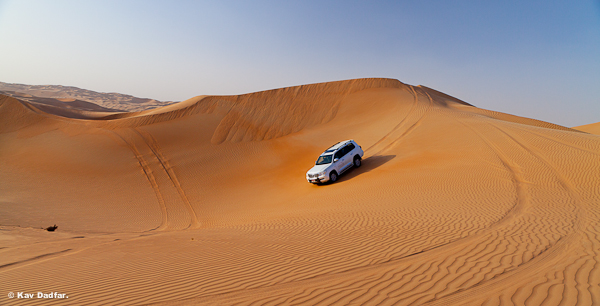
3. Focus on the intricate details of the desert
Capturing the beauty of the desert can be a unique and rewarding experience, especially when you focus on the intricate details that make this environment so captivating.
For instance, one of the things I love about deserts is the way the wind creates intricate sand lines, adding texture and depth to the landscape. These lines can become the centerpiece of your photos, drawing the viewer’s eye and making your images stand out.
To get the most out of these details, consider zooming in with a telephoto lens, or using a macro lens to get up close and personal with your subject. Both these approaches will allow you to emphasize key details and rid your images of distractions.
By the way, when taking telephoto or macro shots, it’s important to pay attention to your aperture setting. Using a narrow aperture will help you achieve a deep depth of field – and with a deeper depth of field, you can keep more of the scene in focus for a dynamic and engaging photograph.

4. Tell a story with your desert photography
When capturing images in the desert, it’s easy to focus solely on the breathtaking landscapes. The towering sand dunes, the vast and empty expanses of sand, and the rugged rocky formations are all impressive subjects, but it’s essential to remember that there are other aspects of the desert that are worth capturing. By seeking out narrative content, you can create a more compelling composition that’ll engage your audience.
Think about the story you want your images to tell and adjust your approach accordingly. For instance, you might photograph a local herder guiding their camels through the sands, a group of tourists exploring the desert, or a single tree bravely standing against the harsh elements. These details can give your images depth and meaning, making them more than just pretty pictures.
However, it’s crucial to be mindful of the location where you’re photographing. In the desert, it’s easy to disrupt the natural environment accidentally. Be cautious of leaving footprints or tire tracks in a scene, especially if your goal is to portray it as pristine. Instead, aim to capture the beauty of the desert in a way that respects and celebrates its unique ecosystem.
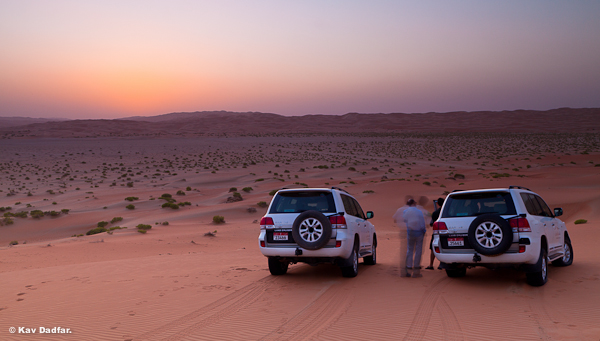
5. Unleash your creativity by finding unusual perspectives
Capturing original desert photographs can be a challenging task for any photographer. It requires a great deal of preparation and pre-visualization to ensure that the images captured are not only awe-inspiring but are also truly unique. While some photographers may get lucky and capture fresh shots by chance, others need to put in the work and think outside the box.
One great way to unleash your creativity is by finding unusual perspectives that make your images stand out. For example, while staying in the UAE, I found myself driving on a particular road several times, wondering how it would look to capture the vastness of the desert from a distance. One day, I decided to hike up the biggest sand dune I could find (which proved to be no easy task!). However, the reward was worth the effort; I was able to capture a breathtaking shot that truly highlights the emptiness of the desert.
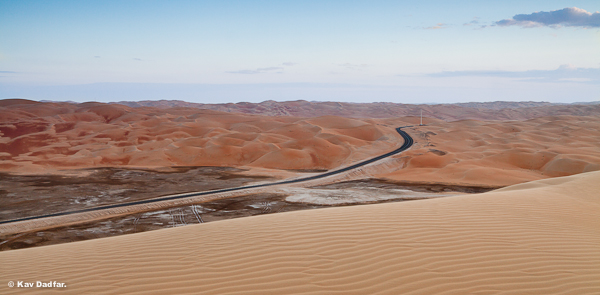
Before embarking on a desert photography adventure, take some time to brainstorm different ways to capture unique images. Consider getting up high or down low to change the perspective, or even using a drone or a helicopter to capture stunning aerial shots. By experimenting with different techniques, you can expand your portfolio and create photos that truly stand out.
6. Protect your camera from the desert elements
When it comes to photographing in the desert, the elements can pose a serious threat to your camera equipment. Sand can be extremely damaging, even on the calmest of days – the lightest wind can blow sand particles into your camera and cause significant harm. That’s why it’s crucial to take extra care to protect your camera.
First, always wrap your camera in a cloth when you’re not using it, and avoid changing lenses whenever possible. Bringing two cameras to the desert is also a smart move as it reduces the need to switch lenses and risk exposing your camera to sand. Consider using a UV filter to protect the glass on your lenses, as this can save you from costly repairs down the line.
Once you’re done shooting, don’t forget to clean your camera thoroughly. Even if you think your camera is free of sand particles, it’s always best to err on the side of caution. To ensure that your camera is spotless, invest in a high-quality cleaning kit. A rocket blower, lens wipes, and a brush are all excellent tools to have on hand.
Remember, the sooner you clean your camera, the better. Sand particles can quickly damage your camera’s delicate components, so make sure to clean your camera as soon as you’re done with each shoot to minimize any potential damage.
Desert photography tips: final words
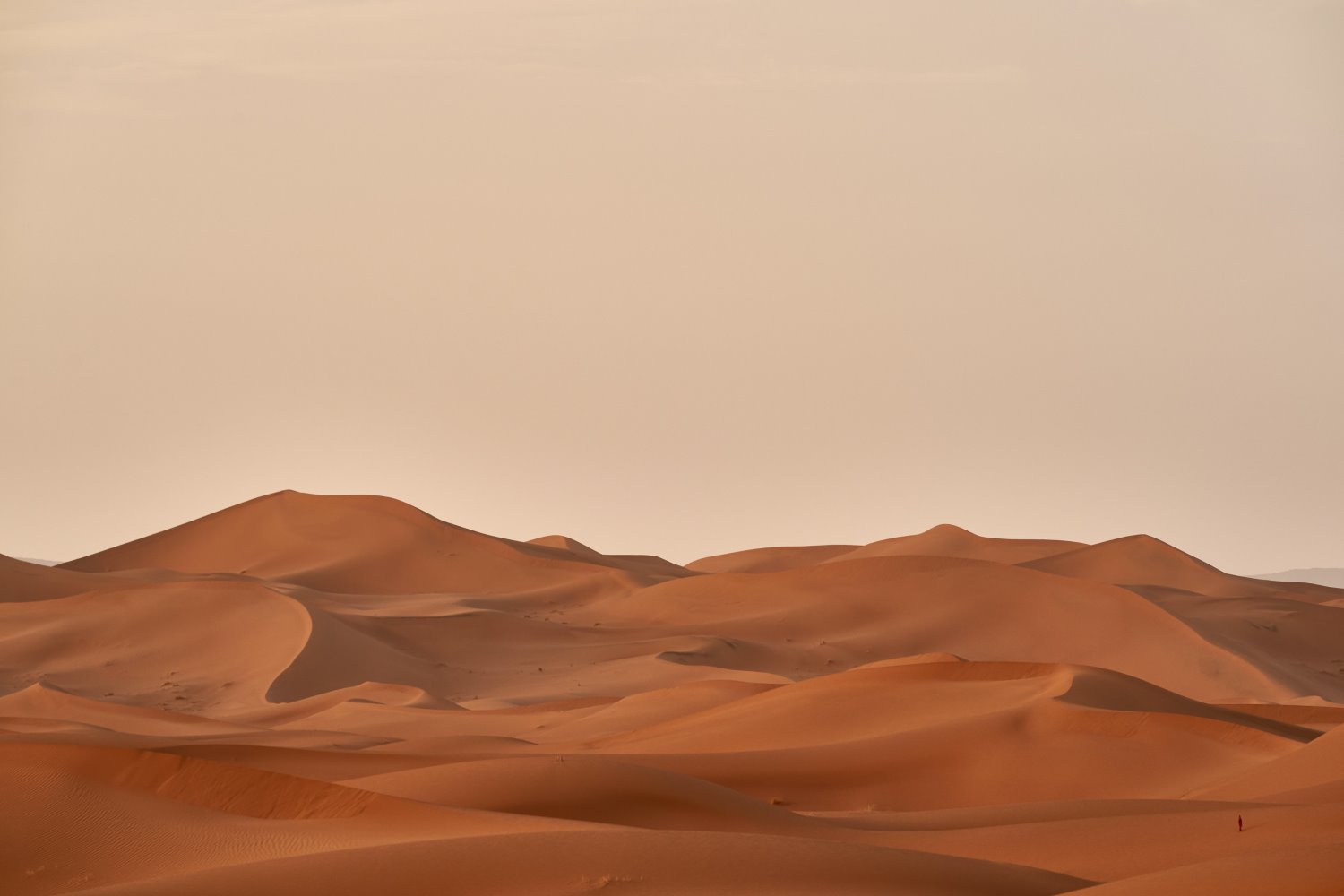
Desert photography is a beautiful art form that requires a keen eye for detail, a willingness to experiment, and a love of the great outdoors. With the right approach, you can produce stunning images that truly capture the essence of this unique landscape.
Remember to look for the best light, incorporate points of interest, focus on details, and tell a story with your photos. Don’t be afraid to experiment and try new things, and always take the time to protect your camera from the harsh desert conditions.
Whether you’re an experienced photographer or just starting out, there’s always something new to learn and discover in the world of desert photography. So why not grab your camera, head out into the great outdoors, and see what kind of stunning images you can create?
Now over to you:
Do you have any desert imaging tips that we missed? Share your thoughts in the comments below!
